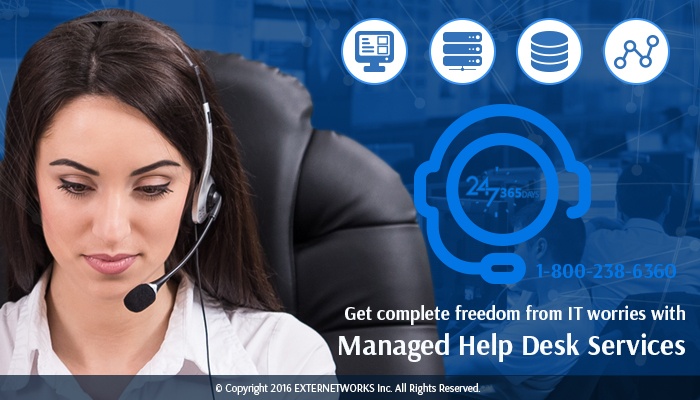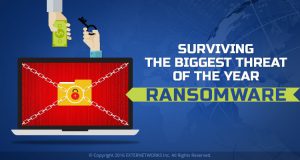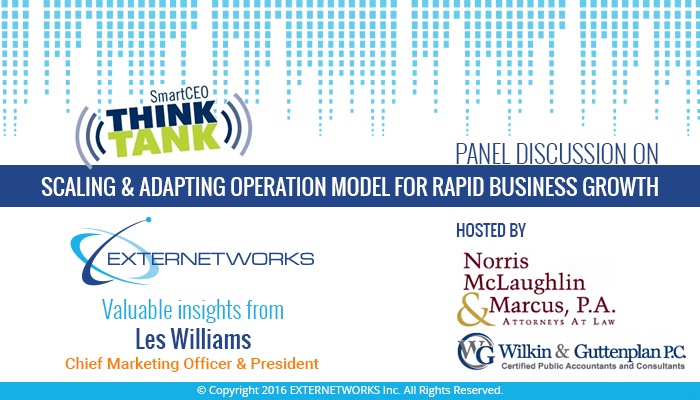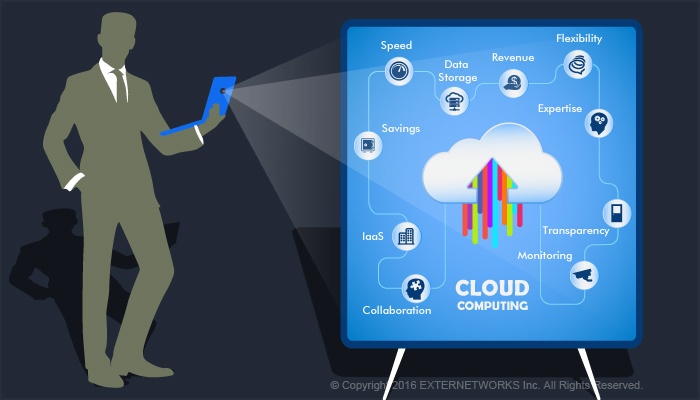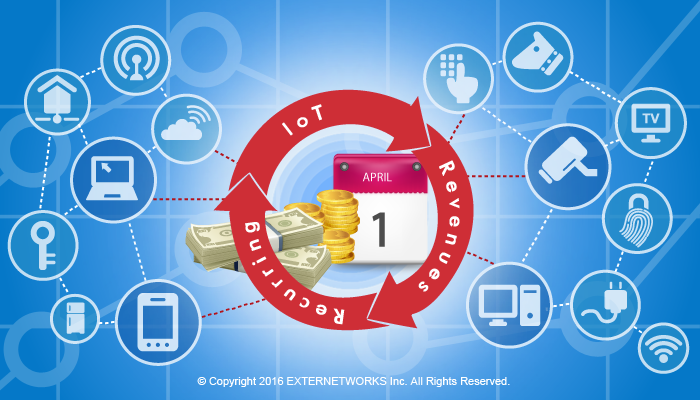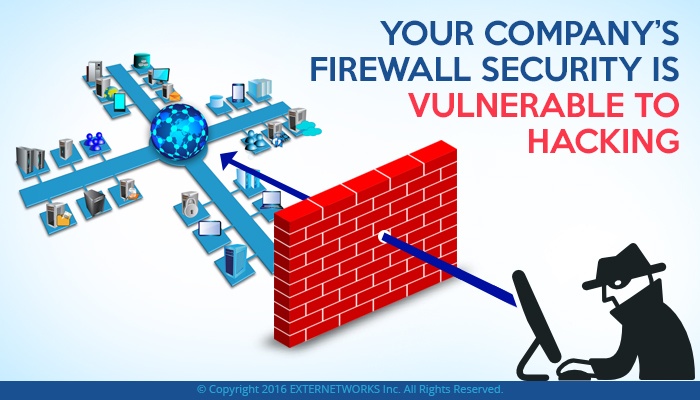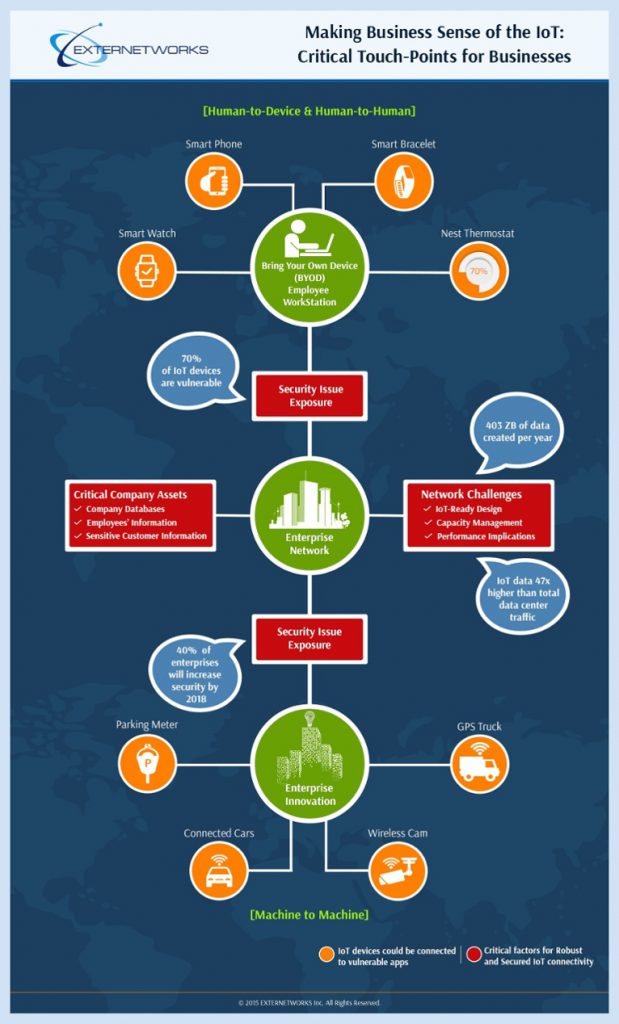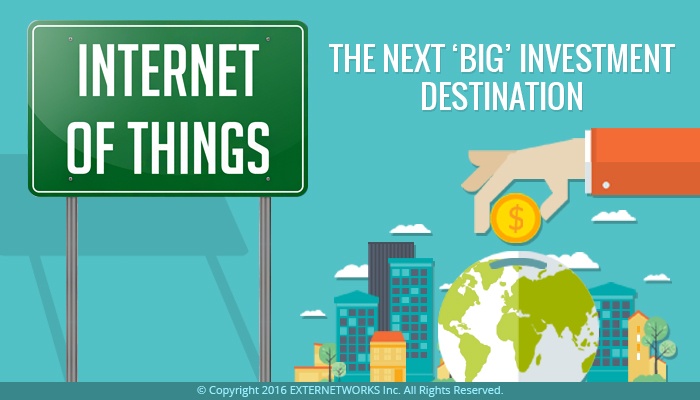Managing The IoT’s Inherent Challenges for Business Success
The IoT presents various opportunities to make systems more efficient in helping people make better decisions and improve their quality of lives. The IoT has ‘connected things’, such as machines, objects, agents, via the internet, and is collecting and managing massive amounts of data from a rapidly-growing network of devices and sensors. This data is then processed, analyzed, and shared further with other connected things. With the myriad of connected devices and the massive amounts of data they generate, you can quickly gauge that the IoT tends to be anything but simple. In this blog, you will learn how approaching the IoT, by taking into account its inherent complexities and challenges, can make a crucial difference in determining the success or failure of your business. Read the full story.
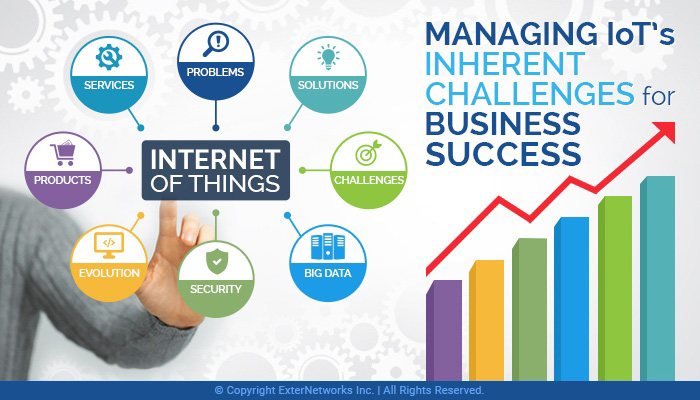
Manage the inherent challenges of the IoT to improve business efficiency.
As more and more products and services get connected to generate the IoT data, robust data analytic abilities are used to transform such data into improving the way people work, live, and play. The IoT, today, has penetrated into a vast array of industries and markets ranging from durable goods, consumer products, industrial and utility components to several other everyday objects.
The IoT is still in its early stages of market development. So, like any other technology that has hit the market in the past, the evolution of the IoT is also exhibiting characteristics of fragmentation, competitive hurdles, innovation, rising standards, and confusion. Many startups are entering the IoT market, making it difficult for the larger technology companies to react and adjust to the change in status quo.
The IoT offers vast opportunities for the development of entirely new apps, platforms, services, standards, devices, business models, and revenue opportunities. It also stands to threaten many existing products, services, markets and industries.
However, the IoT is not as simple as it seems and there are a lot of inherent complexities and challenges involved that may impede you from realizing the IoT’s potential benefits. The primary question to ask yourself is: how can I use the IoT to create and offer more value to my customers?
Read the full story to know why understanding the complex nature of the IoT is crucial for the success of your business.
IoT to a Consumer & a Business: The Basic Difference
Over the years, there have been some amazing improvements in machine-to-machine (M2M) devices and sensors’ connectivity. These advancements present a host of opportunities for businesses to make the IoT possible.
Hence, for companies, the IoT not only creates new markets for entirely new products and services, but also helps in gaining a competitive advantage over their competitors. This is because the IoT is not only about the generation of data, but also about how businesses can use and leverage this data for further analysis and value creation.
So, if you have a business, then the IoT can present new avenues of thinking about your products and services. It does not matter whether you are a service provider or a device manufacturer; in either case, you can use the IoT data to find a business value for your customers. Hence, it is quite natural that the IoT tends to be more complicated for a company than for a consumer.
For a consumer, the IoT is all about gaining value from a service or product to help make one’s life and tasks easier, quicker and better. Hence, while the IoT can be the key to competitive advantage for businesses, for consumers, it can be the key to consumer choice.
Think Before Jumping on the Bandwagon
So, should you adopt the IoT for your business? Will it offer the competitive advantage that it promises? You should seriously evaluate the IoT before jumping on its bandwagon. There are various roles that an organization can play in the IoT value chain, such as cloud provider, systems integrator, device manufacturer, service provider, or solution provider.
So, before adopting the IoT, think carefully about where your business fits in this value chain and how you can gain maximum benefit from the IoT, which offers a wide array of unique and dynamic opportunities. Every business that thinks about leveraging the IoT should first think about whether it is capable enough to handle the enormous quantities of data that will be generated by the connected devices, and whether it is equally competent to manage the unavoidable complexities that arise from the connection of numerous lists of devices.
The significant potential of this developing market has led some businesses to develop products and services without carefully considering the underlying challenges that it presents.
Let’s look at an example to get a better understanding. In 2012, WickedDevice LLC, a tech start-up headquartered in Ithaca, New York, launched a new IoT-based product, the ‘Air Quality Egg’. The primary purpose of this ‘Air Quality Egg’ is to monitor air quality, wherever you place it. To begin with, this seems like a great and innovative idea that is sure to gain hype and success. However, let’s think of a situation about what would happen to the generated data, if we place this ‘Air Quality Egg’ in a box, along with some car exhaust fumes and smoldering paper? You can understand that such a situation would naturally skew the generated data and, hence, would consequently skew the Air Quality Egg’s results and analysis.
To succeed in the field of IoT, you must not only generate and collect data, but also develop your products or services. By bearing in mind, the complexities involved in doing so, you will be able to determine how the resultant data will impact your customers and the market, both at present and in the future.
To create a market impact on the IoT, your products or services must be remarkably flexible and quickly adapt to changing situations. You must deliver high value to your customers and the market through the use of the IoT.
Conclusion:
The IoT offers an entire world of fully connected “smart” relationships between objects, their environment, and people. However, to realize the potential benefits of the IoT for customers, society, and the economy, you must carefully consider and deal with the associated issues and challenges. Thus, the solution to the inherent problems and challenges of the IoT can be found only through informed collaboration, engagement, and dialog among various stakeholders.
So, if your business wants to take full advantage of the biggest market opportunity of your lifetime, first, you must decide your competition. Will your business compete with the platform(s), the device(s), the standard(s), the monetization model(s), the service(s), the app(s), or a combination of these?
You will need a well thought-out plan for this, because the IoT is not very simple, but anyone with a clear and well-defined vision, plan and strategy can be a part of it.
